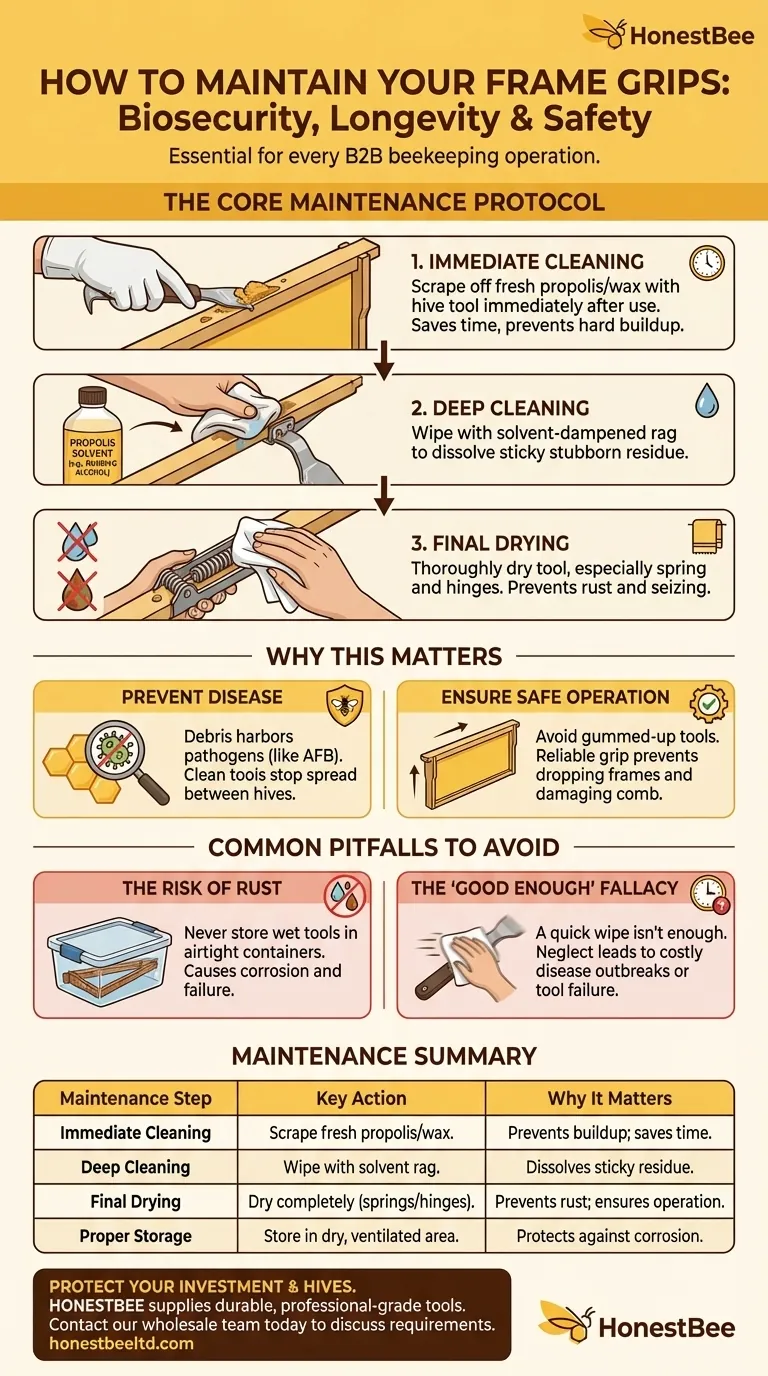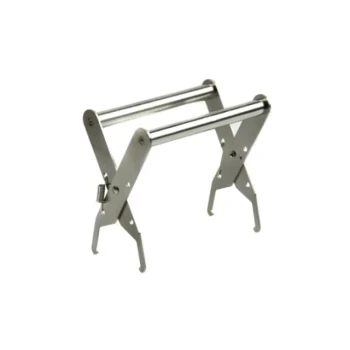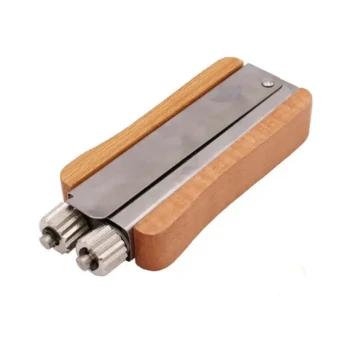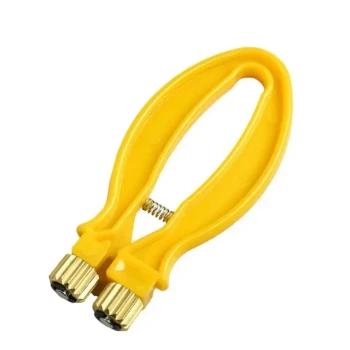Proper maintenance of your frame grips is a simple but critical task for any beekeeper. Immediately after use, you must clean off all propolis, wax, and other debris. Following the cleaning, store the grips in a completely dry place to prevent rust and ensure they are ready for your next hive inspection.
Effective frame grip maintenance goes beyond simple cleaning. It is a fundamental practice for ensuring biosecurity, preventing the spread of disease between hives, and guaranteeing the tool operates safely and reliably when you need it most.

The Core Maintenance Protocol
A consistent cleaning process protects your bees and your equipment. Neglecting this task can lead to frustrating and costly problems down the line.
Immediate Post-Inspection Cleaning
The easiest way to clean your frame grip is to do it right after you finish your inspection. Use the edge of your hive tool to scrape off any fresh propolis and beeswax before it has a chance to harden.
This initial scrape removes the vast majority of buildup and takes only a few seconds while the material is still pliable.
Removing Stubborn Propolis
Propolis is a resinous, sticky substance that can act like glue once it hardens. Simple scraping is often not enough to remove it all, especially from joints and crevices.
For a deeper clean, wipe the tool with a rag dampened with a propolis solvent, such as rubbing alcohol. This will dissolve the sticky residue, making it easy to wipe away completely.
Final Wash and Dry
After removing the propolis, you can wash the frame grips with soap and water if needed. However, the most critical step is thoroughly drying the tool.
Pay special attention to the spring, hinges, and any overlapping metal parts. Moisture trapped in these areas will lead to rust, which can cause the mechanism to seize or fail.
Why This Maintenance Matters
The "why" behind cleaning your tools is far more important than the task itself. It directly impacts hive health and your efficiency as a beekeeper.
Preventing Disease Transmission
This is the single most important reason for tool maintenance. Debris and propolis can harbor pathogens, including the highly resilient spores of American Foulbrood (AFB) and other diseases.
Moving from one hive to another with a contaminated tool is a primary vector for spreading infection throughout your apiary. Clean tools are a cornerstone of good biosecurity.
Ensuring Smooth and Safe Operation
A frame grip gummed up with old propolis can become stiff and unreliable. It may fail to grip a frame securely or, worse, fail to release it properly.
A sudden slip or jerky movement can damage delicate comb, crush bees, or even cause you to drop a heavy frame full of honey and brood. A clean, functioning tool is a safe and efficient tool.
Common Pitfalls to Avoid
Simple mistakes can undermine your maintenance efforts or even damage your tools. Being aware of them is key to doing the job right.
The Risk of Rust
The primary enemy of any metal beekeeping tool is rust. Washing your frame grips and then tossing them into a humid toolbox is a recipe for corrosion.
Always confirm the tool is bone dry before storing it. Storing it in a dry, ventilated area is preferable to an airtight plastic container where moisture can become trapped.
The "Good Enough" Fallacy
It is tempting to give the tool a quick wipe and call it a day. This is a false economy.
The few seconds you save by not cleaning properly can lead to hours spent dealing with a disease outbreak or the frustration of a tool that fails during a critical moment in a hive inspection.
Making the Right Choice for Your Routine
Your maintenance can be adapted based on your primary concern at the moment.
- If your primary focus is biosecurity: Always sterilize your grips with a rubbing alcohol wipe when moving between different apiaries or after inspecting any hive that appears weak or diseased.
- If your primary focus is tool longevity: Ensure the grip is completely dry, paying special attention to joints and springs, before putting it away.
- If your primary focus is efficiency: Scrape off fresh propolis with your hive tool immediately after use, before it has a chance to harden and become a bigger problem.
A well-maintained frame grip is the mark of a disciplined and effective beekeeper.
Summary Table:
| Maintenance Step | Key Action | Why It Matters |
|---|---|---|
| Immediate Cleaning | Scrape off fresh propolis/wax with a hive tool. | Prevents hard buildup; saves time. |
| Deep Cleaning | Wipe with a rag and rubbing alcohol (propolis solvent). | Dissolves sticky residue for a thorough clean. |
| Final Drying | Dry the tool completely, especially springs and hinges. | Prevents rust and ensures smooth operation. |
| Proper Storage | Store in a dry, ventilated area. | Protects against corrosion and damage. |
Protect Your Investment and Your Hives
Proper tool maintenance is non-negotiable for successful, large-scale beekeeping. HONESTBEE supplies commercial apiaries and beekeeping equipment distributors with durable, professional-grade tools designed to withstand rigorous use and proper cleaning protocols.
Ensure your operation has the reliable equipment it needs. Contact our wholesale team today to discuss your requirements and keep your apiary productive and disease-free.
Visual Guide

Related Products
- Heavy-Duty Stainless Steel Frame Grip
- Professional 3-Bar Frame Grip with Integrated Hive Tool
- Heavy-Duty T-Style Frame Perch
- Heavy-Duty Stainless Steel Clip-On Frame Perch
- Heavy-Duty Stainless Steel Frame Perch
People Also Ask
- Why is a frame gripper important for beekeepers? Achieve Secure, One-Handed Frame Control
- What are Frame Grips used for in beekeeping? Boost Your Hive Inspection Efficiency & Bee Safety
- How do you use Frame Grips during hive inspections? Achieve Calmer, More Efficient Hive Inspections
- How does the frame lifter hive tool function? Master Safe and Gentle Frame Removal
- How are eyelets installed in the frame? Protect Your Beehive Frames from Wire Damage



















